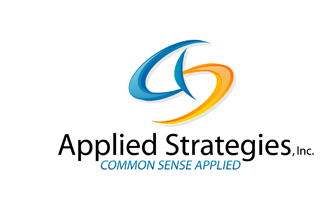There are four major components to client service value:
- Time: Speed of response;
- Service: Extraordinary service is becoming the norm; ordinary service is unacceptable;
- Quality: High quality is the cost of admission to the marketplace. It does not attract new clients because it is a given a firm must deliver quality; and
- Price: Perceived cost-benefit received for dollars spent.
So what are innovative firms doing about matching the delivery of their services to the service value expectation of their clients?
There are four areas that seem to be getting most of the attention:
- project management
- legal technology
- fee arrangements
- legal process improvement
The first three areas have been written about extensively and have been embraced to a reasonable degree by law firms (although overall still grudgingly). While the devil is always in the details, clients and firms appear to be moving ahead on equal footing in these areas. (Read about what Clifford Chance is doing.)
"...the one getting the least attention, legal process, is the elusive 'differentiator' between firms. |
Legal process improvement, which is being achieved through process mapping, is going on in both in-house law departments and firms and it is not just a phenomenon restricted to the U.S. A couple of the Canadian banks, as well as a number of other corporate law departments, are in varying stages of implementing a review of their legal processes.
Why, you might ask. Because according to Kenneth Grady, CEO of Seyfarth Lean Consulting LLC, a subsidiary of the U.S. law firm Seyfarth Shaw LLP: “Legal process management digs deep into how each step is performed. Using process mapping and other techniques, the team walks through the step examining and sequencing what it takes to complete the services. Traditional legal service delivery is very inefficient; by some measures professional services are 30 to 80 per cent waste. Stripping out the waste improves quality and reduces costs.”
Lest you be thinking law firms are the only ones working hard and doing more with less Kenneth shared that despite the rise in workloads and compliance risk, “Organizations ask their in-house counsel to do more with less. In-house attorneys must find ways to improve time to completion, and increase service and quality levels, all while delivering the services within a capped or shrinking budget.”
There are processes outside the legal sphere that have worked for a huge cross-section of businesses, helping them tackle the challenge of doing more with less. Like their counterparts in the various departments of the company, in-house counsel are being confronted with the fact they too can “no longer support a system that encouraged overuse of time and effort to achieve a given goal. Techniques well known outside the legal industry, such as lean six sigma and technological innovation, have become popular paths to solving the more-for-less challenge,” points out Grady.
Never has it been more critical to be in alignment with your clients! So if the clients are mapping out their service delivery processes, might it behoove law firms to get in synch?
Of course the answer is yes, but the second and third questions of how and who are a little more challenging.
Innovative firms (size does not matter) have been early adopters of this game-changing approach. The most notable to date in Canada is Borden Ladner Gervais LLP, which launched “BLG Adroit” that encompasses both lean process improvement and lean project management.
For this column, I spoke with a Canadian organization that works with law firms in the area of process mapping and optimization of legal, administrative, and business processes. Gimbal Canada is based in Montreal and the key principals are Karen Dunn Skinner and David Skinner. Both are lawyers and certified Lean Six Sigma Senseis who practised law in Canada and abroad.
The premise of their offering is lawyers have to begin looking at service value proposition from their client’s perspective. To do this, they believe lawyers must ask themselves the following three critical questions at each step in the process of delivering legal services:
- Does the activity move the matter forward?
- Is it something the client wants and is willing to pay for?
- Is it done right the first time?
As Karen notes, if your answers are no, “your work is wasteful, and in this economy, waste is something clients are increasingly unwilling to pay for.” She says “firms are turning to lean’s proven business improvement strategies to drive efficiency and improve the quality of their services.”
"The Process map provides a visual representation of every step, touch, task, person, and resource used to complete a legal transaction or a business process." |
By way of a simplified explanation, the process map lies at the core of the lean six sigma approach. It provides a visual representation of every step, touch, task, person, and resource used to complete a legal transaction or a business process.
Mapping is an interactive process that reveals rework loops, steps that don’t add value (from the client’s perspective), bottlenecks, misallocation of resources, and other forms of waste that impede the flow of quality work. The map serves as a baseline from which to identify and target improvement opportunities.
The goal should be to implement sustainable solutions that optimize processes by reducing errors and waste, and increasing quality and productivity.
David says, “Process maps serve multiple purposes. They allow you to capture the best practices of your top lawyers. Knowledge is a firm’s greatest asset; capturing it is virtually priceless. Mapping also allows you to better describe your approach and best practices to clients (an important marketing tool); train students, new associates, and lateral hires in your approach and your best practices; and estimate and price more accurately.”
For the uninitiated and those sitting on the fence in indecision, I encourage you to contact the service providers interviewed for this column; accounting firms; other consulting entities; whomever you are most comfortable dealing with and begin educating yourself on the steps necessary to ensure your firm’s approach to the delivery of legal services results in value-adding services in your clients’ mind.

